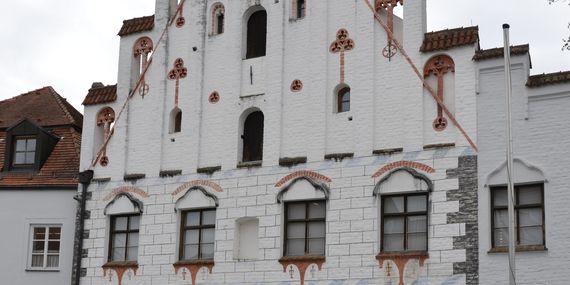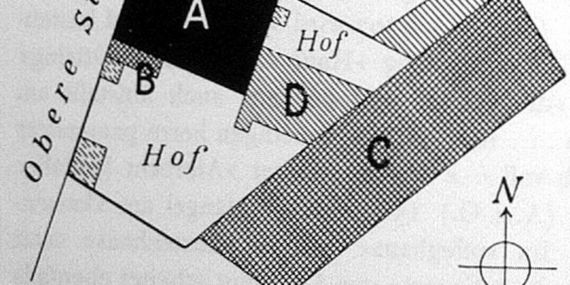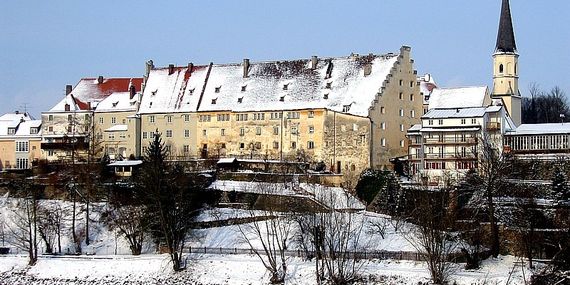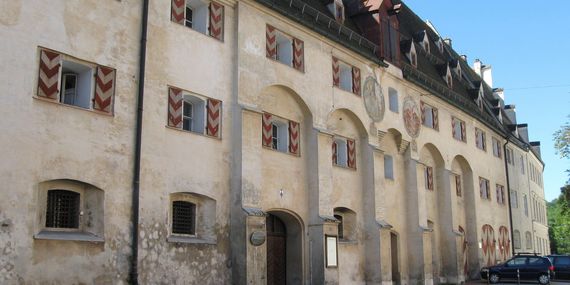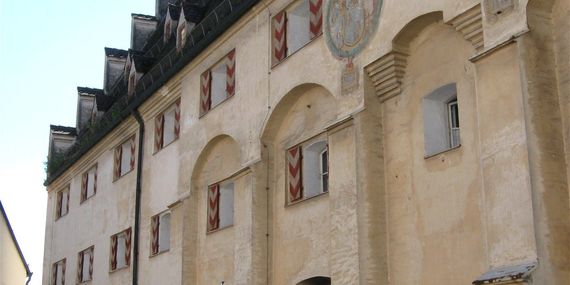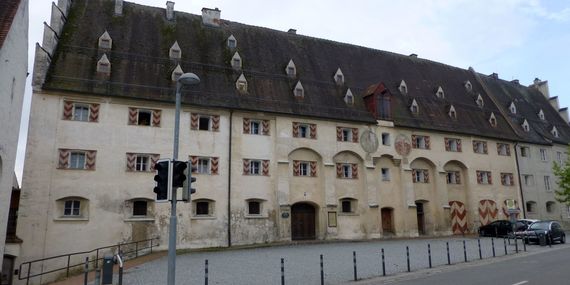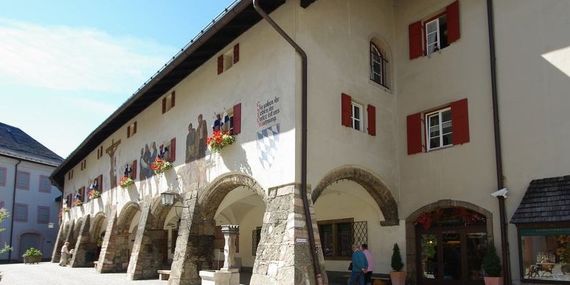Hohlmaß (Oberhausmuseum Passau).
Copyright: Oberhausmuseum Passau
Representative Storages
Especially at Bavarian ducal seats of the late Middle Ages grain storages (in German: “Getreidekästen") played an important role. They often formed an inseparable unit with the living and the administrative rooms and had a corresponding representative function.
The duke’s storage in Dingolfing consisted of an office building with a representative stepped gable, decorative battlements on the street side, and a grain storage in the courtyard. Duke Johann III of Straubing-Holland (ruled 1417-1425) had erected the main building for his court (hence the echoes of Dutch brick Gothic). The grain storage was built in 1477 along the existing city wall, the battlements of the city wall continue through the storage that is connected to the main building. In the late 15th century the Dingolfing storage often served as accommodation for the rich dukes of Lower Bavaria and their high-ranking guests. Only in 1603 Duke Maximilian sold it.
In Wasserburg am Inn a first storage building had already been built in 1415. After the transition of the city to the Duchy of Bavaria-Landshut in 1447, the dukes turned it into a new rent office next to Burghausen, Ingolstadt, Landshut and Weiden. Here, the taxes of the landowner were collected and administered by the rent master, keeper, judge and castner. The former residence received the character of an official castle.
The office of care and the office of caste were preserved even after the Landshut War of Succession (1504/05) and the transition of Wasserburg to the dukes of Munich. Duke Wilhelm IV extended the residence and rebuilt parts of the storage from 1526 onwards. The grand building itself and above all the coats of arms on the front show that it was by no means just a functional building, but an essential part of the ducal representation at the official seat in Wasserburg.
